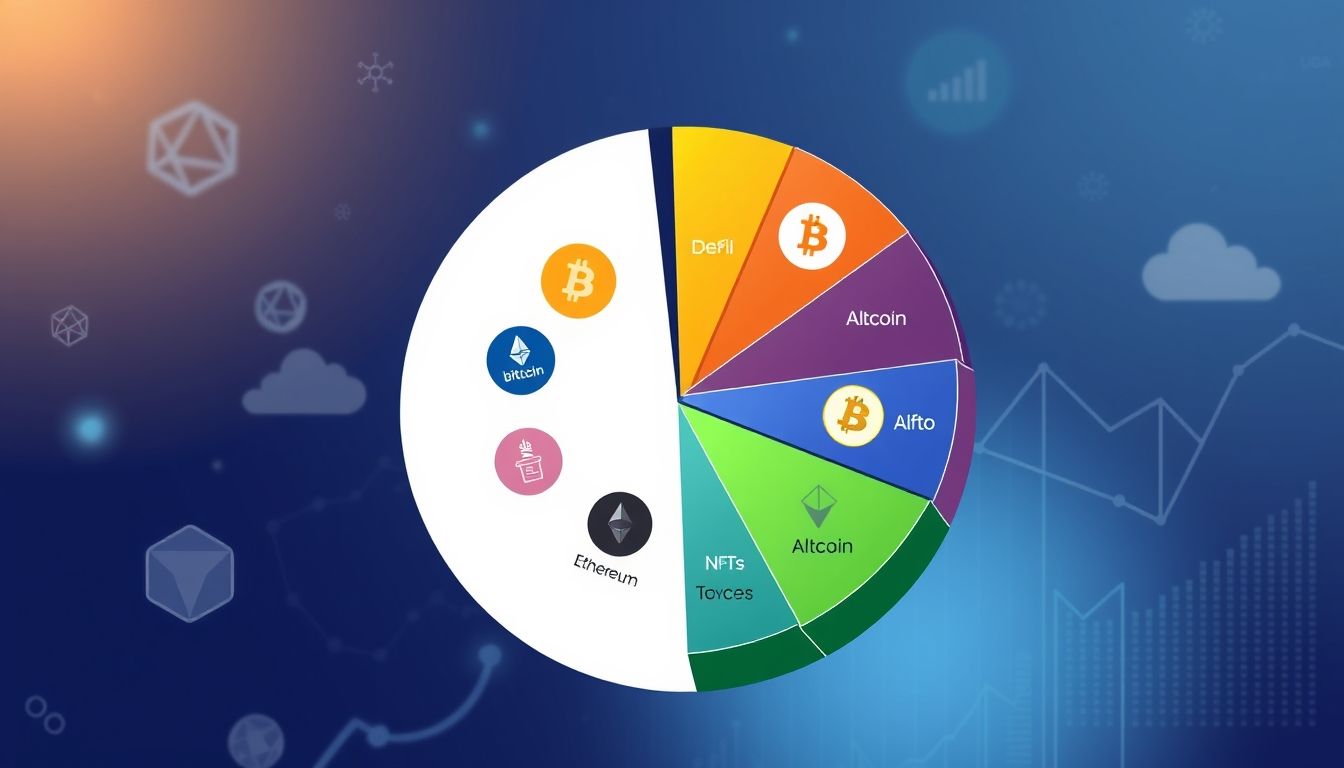Introduction: The Cryptocurrency and Web 3.0 Revolution
The world is witnessing a radical transformation in how we interact with money and the internet, thanks to the emergence of cryptocurrencies and Web 3.0 technologies. These technologies are not just passing trends; they are profound changes with the potential to reshape the economy and society. In this article, we will explore the impact of cryptocurrencies and Web 3.0 on the future of finance and the decentralized internet, focusing on the opportunities and challenges facing investors and individuals.
Chapter 1: Understanding Cryptocurrencies
What are Cryptocurrencies?
Cryptocurrencies are digital or virtual assets that use cryptography to secure transactions and control the creation of new units. Cryptocurrencies differ from traditional currencies issued by governments (fiat currencies) in that they operate on decentralized networks called blockchains.
Types of Cryptocurrencies
- Cryptocurrencies: Such as Bitcoin and Ethereum, which are the most well-known and use blockchain technology.
- Stablecoins: Designed to maintain a stable value pegged to another asset, such as the US dollar.
- Central Bank Digital Currencies (CBDCs): Digital currencies issued and supported by central banks.
Benefits of Cryptocurrencies
- Decentralization: Not controlled by any government or financial institution.
- Transparency: All transactions are recorded on the blockchain and can be verified.
- Speed: Transactions are faster and cheaper than traditional transactions.
- Security: Cryptography is used to protect transactions.
Chapter 2: Blockchain Technology
What is Blockchain Technology?
Blockchain is a distributed digital ledger that records transactions in a secure and transparent manner. The blockchain consists of a chain of blocks, where each block contains a set of transactions and information about the previous block. This structure makes it extremely difficult to change or forge data recorded on the blockchain.
How Does Blockchain Work?
- A transaction is sent.
- The transaction is grouped with other transactions into a block.
- The block is verified by a network of computers (miners).
- The block is added to the blockchain.
- The transaction becomes permanent and cannot be changed.
Applications of Blockchain
- Cryptocurrencies: The technological foundation for Bitcoin, Ethereum, and others.
- Supply Chain Management: Tracking products from origin to consumer.
- Electronic Voting: Ensuring transparency and integrity in elections.
- Healthcare: Securely storing patient records.
Chapter 3: Web 3.0 and the Decentralized Internet
What is Web 3.0?
Web 3.0 is the next generation of the internet, which aims to be more decentralized, intelligent, and secure. Web 3.0 relies on technologies such as blockchain, artificial intelligence, and big data to create a more personalized and interactive user experience.
Characteristics of Web 3.0
- Decentralization: Control of data returns to users.
- Artificial Intelligence: Using AI to improve the user experience.
- Augmented and Virtual Reality: Integrating AR and VR into web applications.
- Big Data: Analyzing big data to provide valuable insights.
The Decentralized Internet
The decentralized internet is a vision of the internet where no central authority controls data or applications. The decentralized internet relies on technologies such as blockchain and peer-to-peer networks to create a more free and transparent system.
Chapter 4: Real-World Applications of Web 3.0
Decentralized Finance (DeFi)
Decentralized Finance is a financial system based on blockchain that offers traditional financial services such as lending, borrowing, and trading without the need for traditional intermediaries.
Non-Fungible Tokens (NFTs)
Non-fungible tokens are unique digital assets that represent ownership of an item, whether it is artistic, musical, or even real estate. NFTs are used to secure digital property rights and facilitate the trading of unique assets.
Decentralized Autonomous Organizations (DAOs)
Decentralized Autonomous Organizations are organizations that operate on the blockchain and make decisions collectively through a voting system. DAOs aim to create more transparent and democratic organizations.
Chapter 5: Investing in Cryptocurrencies and Web 3.0
Tips for New Investors
- Research and Analysis: Understand the basics of cryptocurrencies and Web 3.0 before investing.
- Diversification: Don't put all your eggs in one basket.
- Risk Management: Determine the appropriate level of risk.
- Long-Term Investing: Focus on assets with long-term potential.
Best Cryptocurrencies to Invest In
The best cryptocurrencies to invest in depend on your investment goals and risk tolerance. Some promising cryptocurrencies include:
- Bitcoin (BTC): The first and most well-known cryptocurrency.
- Ethereum (ETH): A platform for blockchain applications and smart contracts.
- Cardano (ADA): A blockchain platform aimed at providing sustainable and scalable solutions.
- Solana (SOL): A fast and cost-effective blockchain.
Chapter 6: Challenges and Risks
Price Volatility
Cryptocurrencies are characterized by high price volatility, making them a risky investment.
Security
Hacking attacks and theft of cryptocurrencies are a real threat.
Regulation
Regulatory uncertainty poses a significant challenge to cryptocurrencies and Web 3.0.
Scalability
Some blockchain networks face difficulties in handling a large number of transactions.
Chapter 7: The Future of Cryptocurrencies and Web 3.0
Institutional Adoption
Growing interest from major financial institutions in cryptocurrencies and Web 3.0.
Technological Developments
Continuous innovation in blockchain and Web 3.0 technologies.
Government Regulation
Development of regulatory frameworks for cryptocurrencies and Web 3.0.
Chapter 8: Cryptocurrencies in the Arab World
Increasing Adoption
The Arab world is witnessing significant growth in the use of cryptocurrencies.
Local Challenges
Regulatory and cultural challenges facing cryptocurrencies in the Arab world.
Available Opportunities
Opportunities available to investors and companies in the field of cryptocurrencies and Web 3.0 in the Arab world.
Chapter 9: Practical Tips for Users
Protecting Digital Wallets
Using strong passwords and enabling two-factor authentication.
Verifying Information Accuracy
Verifying information sources before making investment decisions.
Continuous Learning
Keeping up with developments in the field of cryptocurrencies and Web 3.0.
Chapter 10: Conclusion
Cryptocurrencies and Web 3.0 represent a real revolution in the world of finance and the internet. Despite the challenges and risks, the opportunities available to investors and individuals are significant. Through research, analysis, and careful planning, you can take advantage of these technologies to achieve your financial goals.
"Cryptocurrency is a digital or virtual currency that is secured by cryptography, which makes it nearly impossible to counterfeit or double-spend." - Investopedia
| Cryptocurrency | Market Cap (Approximate) | Description |
|---|---|---|
| Bitcoin | $500 Billion | The first and most well-known cryptocurrency |
| Ethereum | $250 Billion | Platform for blockchain applications |




